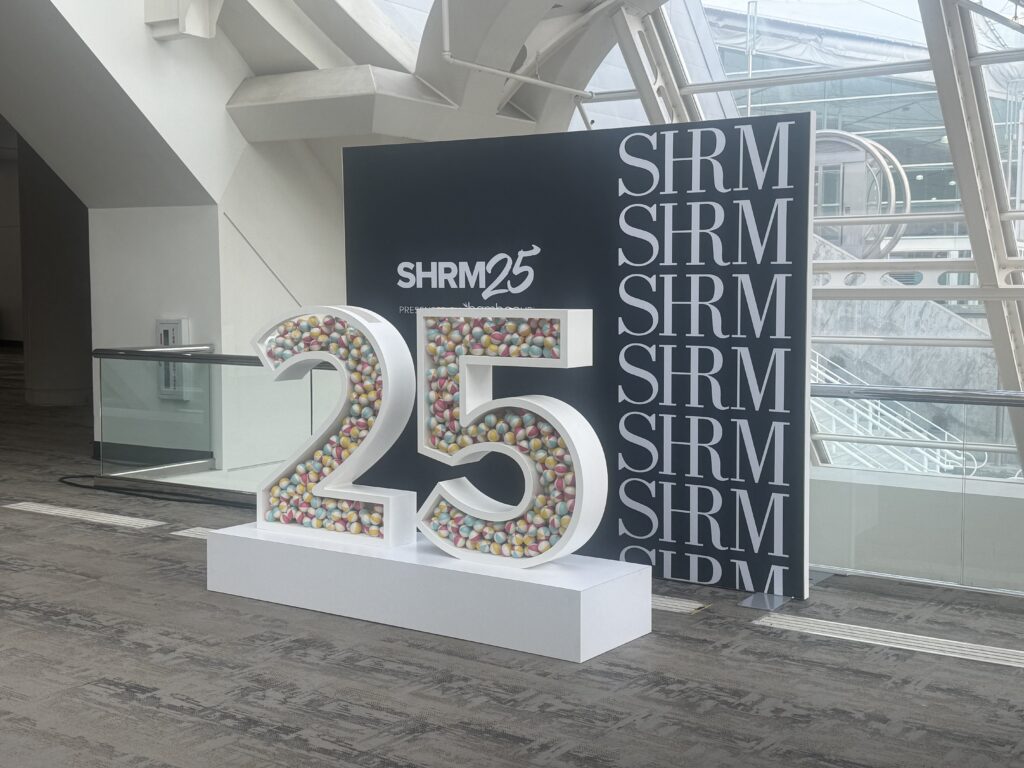Every year, the IRS announces a new mileage rate. That number is generally somewhere between 30 cents and 60 cents. And it has considerable impact on many companies’ vehicle programs. But that number isn’t just selected at random. So what is the IRS mileage rate? What kinds of factors effect the way the rate changes? And, when it does change, how should companies react? We’ll explain everything you need to know about the IRS mileage rate and more in this post.
What’s the IRS mileage rate?
The IRS rate is a guideline for mileage reimbursement. That means employers can reimburse employees for their business mileage at this rate. As long as a company does not set their allowance or cents-per-mile reimbursements above this rate, the reimbursement is not taxable. Unfortunately, for some companies this is easier said than done.
Below is a list of the rates since 2011.
|
Year |
IRS Mileage Rate | Charity | Medical/ Moving |
| 2024 | 67 | 14 | 21 |
| 2023 | 65.5 | 14 | 22 |
| 7/1/2022 – 12/31/2022 | 62.5 | 14 | 22 |
| 1/1/2022 – 6/30/2022 | 58.5 | 14 | 18 |
| 2021 | 56 | 14 | 16 |
| 2020 | 57.5 | 14 | 17 |
| 2019 | 58 | 14 | 20 |
| 2018 | 54.5 | 14 | 18 |
| 2017 | 53.5 | 14 | 17 |
| 2016 | 54 | 14 | 19 |
| 2015 | 57.5 | 14 | 23 |
| 2014 | 56 | 14 | 23.5 |
| 2013 | 56.5 | 14 | 24 |
| 2012 | 55.5 | 14 | 23 |
| 7/1/2011 – 12/31/2011 | 55.5 | 14 | 23.5 |
| 1/1/2011 – 6/30/2011 | 51 | 14 | 19 |
As you can see, the IRS mileage rate isn’t the only rate listed. So what are these other rates?
Charity
This rate is not related to business mileage. If you’re doing charity work that requires driving, you may be able to deduct those expenses from your taxes. There are some standards that must be met though.
- The charitable organization must be certified.
- You can’t claim miles driven if you’ve already been reimbursed.
- The claimed mileage must be connected to the miles driven and only for that intended purpose.
- You shouldn’t be claiming the beverage you purchased with the gas prior to the trip, and it can’t have been conveniently on your way home from work.
- It cannot be a personal, living or family expense.
If your drive meets those standards, you can deduct 14 cents per mile for travel to and from the place (including tolls and parking fees). Or, and this might be better, you can deduct actual variable costs, like, for example, the cost of gasoline. Because 14 cents per mile isn’t covering the cost of the drive, deducting the variable costs is likely the best method.
Moving
According to Section 217 of the U.S. tax code, you can deduct the expenses of moving household goods/personal effects and travel. The moving rate applies to moving travel mileage. There are two ways to deduct the cost of moving: at the standard mileage rate or the actual costs. As with the charity rate above, claiming actual costs is probably the best of the two options.
Medical
Under Section 213 of the Internal Revenue Code, one can deduct for miles driven to get medical care, treatment, etc. This includes trips to the doctor, dentist or other trips with medical purposes (getting prescriptions, attending therapy sessions). Note that traveling nurses and other employees in the medical field would not use this deduction for their business mileage. Their travel falls under the category of business travel, which was impacted by the TCJA beginning in 2018.
A Number with Many Names
The IRS mileage rate also has several names. These include, but are not limited to: the IRS Safe Harbor rate, the standard mileage rate, the IRS mileage reimbursement rate, the federal mileage rate and the business mileage rate. Know that all of these names are the same thing. Any variation is for style points. In all its forms, the IRS rate remains a reimbursement guideline. That will not change when the 2023 mileage reimbursement rate is announced.
What factors determine the IRS Mileage Rate?
The IRS mileage rate is determined as a guideline for business mileage reimbursement. When most people hear “business mileage reimbursement,” they think fuel costs. But if you think about it, it’s easy to see there are more expenses to driving than just fuel prices. Here are a few of the contributing factors.
The Cost of Fuel
Fuel is not the only expense, but it’s still a major factor. This isn’t just how prices change at the pump. It’s what makes those changes. Is fuel production stable? Are producers competing for market share? Are they cutting back on production? The economy can also greatly impact fuel trends. In a down economy, as shipping demands decrease, fuel demands decrease. If the economy is booming, fuel demand keeps up with shipping needs.
Vehicle Maintenance
Even new cars require an oil change a few times a year. Oil changes, and other vehicle maintenance needs like replacing tires and filters, can rise depending on how much use they see. Vehicle maintenance is generally considered to be recession proof. When the economy is doing poorly, people with vehicle problems still need to fix them. Vehicle maintenance costs have been on a rising trajectory for some time and doesn’t seem likely to drop anytime soon.
Insurance Rates
Accidents happen. More vehicles on the road, a higher rate of accidents. Distracted driving also increases the rate of accidents, and there’s plenty to be distracted by. As a result, insurance rates trend higher. While the cost of insurance may change with the seasonal surging and shrinking number of people on the road, it’s still a cost drivers pay. For that reason, it influences the IRS business mileage rate.
Vehicle Costs
Clearly, vehicles are necessary for driving. Thus, their costs are a factor in deciding the IRS rate. And vehicles have been more expensive with each year. Some of that is a change in taste. Buyers are looking less for traditional sedans and more for compact SUV’s, hatchbacks and trucks. A good deal of it is new safety features. Back up cameras, lane departure warnings, assisted braking and pedestrian detection? Vehicle owners can appreciate these measures at increased costs.
Credits and Deductions: No More Tax Deductions
Before 2016, employees could write off unreimbursed business mileage at the IRS business mileage rate as a deduction. However, since the Tax Cuts and Jobs act, that is no longer an option. Hopefully, your company has taken appropriate steps to make up for that with a reimbursement. If not, you could be facing some legal trouble.
Why do so many companies use the IRS mileage rate for reimbursement?
Companies use the IRS mileage rate as their reimbursement for a number of reasons. First, it’s relatively easy. Using the mileage rate set out by the IRS means the company doesn’t have to spend resources determining a rate of their own. Another major reason is reimbursing at the federal mileage rate is tax free. Given how much companies can lose to tax waste, that’s a big draw.
Why are other reimbursements taxable?
Reimbursements can be found taxable for two major reasons. The first is substantiation. If a reimbursement is paid out but isn’t tied directly to mileage, that reimbursement is considered additional income. This is a major issue with the car allowance vehicle program.
The second reason is reimbursing at the rate above the IRS mileage rate. Again, this is considered additional income and is also taxed as regular wages to an employee would be. In both cases, employers pay more and employees receive less.
Issues with the IRS Mileage Rate
As stated earlier, the IRS mileage rate is a guideline. As long as a company reimburses at or below that rate, reimbursements are not taxable. However, this guideline is determined by factors from the previous year. If your company is currently reimbursing its driving workforce at the current IRS rate, we recommend looking at alternatives for these reasons:
- Reimbursing at the IRS rate isn’t fair to your employees. Some driving employees will be under reimbursed, others will be over reimbursed.
- Location affects the costs of fuel and maintenance. This also makes the reimbursement unequal.
- Companies use the IRS business mileage rate for reimbursement, but that isn’t what it was established for. The IRS enacted the rate as a cap guide.
How should your company prepare for the IRS mileage rate change?
Companies preparing for the IRS standard mileage rate change should review their reimbursement process to ensure they’re prepared come January of the next year. That might mean connecting with an in-house team or an outsourced vehicle reimbursement provider. The rate can change up or down, depending on the influences listed above. Don’t make the avoidable mistake of over-reimbursing employees because the first of the year slipped by.
Switching From the IRS Mileage Rate
The best course of action when considering a move from a vehicle program is exploring other options. There are several popular vehicle reimbursement programs: car allowances, company-provided vehicles, cents-per-mile and Fixed and Variable Rate (FAVR) reimbursement. But of these, there is only one truly equitable vehicle program option. In fact, the Fixed and Variable Rate (FAVR) reimbursement is the only IRS recommended reimbursement methodology. Why? Let’s break down the cost of vehicle ownership into two camps: fixed and variable.
Using FAVR Plans
Fixed costs are made up of insurance payments, registration, and license renewal fees. These are considered “fixed” costs because they change very little. Then there are variable costs, which include fuel, tires and general maintenance. These costs are considered “variable” because these prices fluctuate far more frequently. Unlike any other program, the Fixed and Variable Rate (FAVR) program accounts for both the fixed and variable costs of vehicle use. With the right company, reimbursements are specific to each individual driver and the place they operate. Interested in learning more about vehicle programs?
Knowing Which Vehicle Program Is Right For You
Mileage reimbursement at the IRS rate and FAVR are just two of the most common vehicle programs. We mentioned the others above, but didn’t dive in too deep. Looking for an alternative to the IRS rate? Or just to learn more about your vehicle program options? Check out our blog that details the options available to your company.








